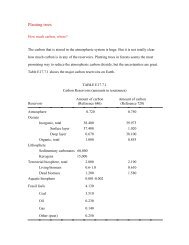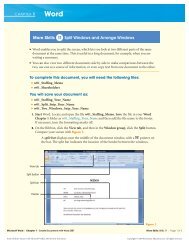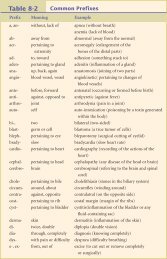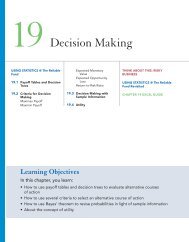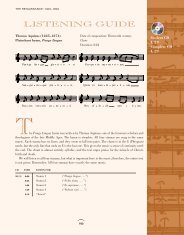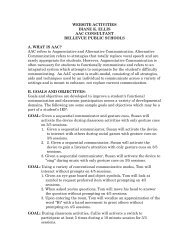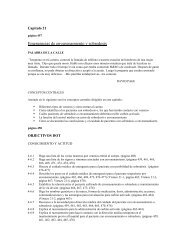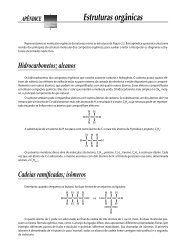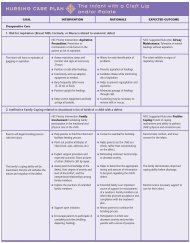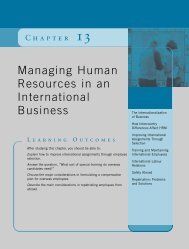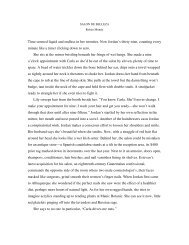chapter
chapter
chapter
Create successful ePaper yourself
Turn your PDF publications into a flip-book with our unique Google optimized e-Paper software.
A. Period of normal magnetism<br />
B. Period of reverse magnetism<br />
C. Period of normal magnetism<br />
Magma<br />
Magma<br />
Magma<br />
sphere plunge into the mantle. Shallow-focus earthquakes<br />
are produced as the descending plate interacts<br />
with the overriding lithosphere. As the slab descends<br />
farther into the asthenosphere, deeper-focus earthquakes<br />
are generated (Figure 7.22). Because the earthquakes<br />
occur within the rigid subducting plate rather<br />
than in the plastic mantle, they provide a method for<br />
tracking the plate’s descent. Very few earthquakes have<br />
Key<br />
Shallow<br />
Intermediate<br />
Deep<br />
Chapter 7 Plate Tectonics 215<br />
Figure 7.20 As new basalt is added to<br />
the ocean floor at the oceanic ridges, it is<br />
magnetized according to Earth’s existing<br />
magnetic field. Hence, it behaves much<br />
like a tape recorder as it records each<br />
reversal of the planet’s magnetic field.<br />
been recorded below 700 kilometers (435 miles), possibly<br />
because the slab has been heated sufficiently to lose<br />
its rigidity.<br />
Evidence: Ocean Drilling<br />
Some of the most convincing evidence confirming the<br />
plate tectonics theory has come from drilling directly<br />
Figure 7.21 Distribution of shallow-, intermediate-, and deep-focus earthquakes. Note that intermediate- and deep-focus<br />
earthquakes only occur in association with subduction zones. (Data from NOAA)




